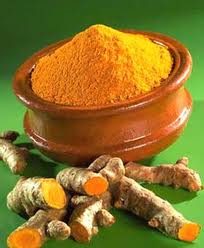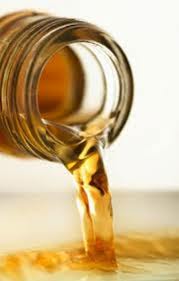Best Diabetes Foods To Help You Reverse the Condition (Part
2)
On the previous page we discussed a few of the best diabetes foods, such as apples, avocado, barley, beans, berries, broccoli, Brussels sprouts and chicory.
On this page we'll discuss:
Fenugreek

Studies show that this spice, popular in Indian and Middle Eastern cuisines, is one of the best diabetes
foods because it can help reduce blood sugar in two ways:
- A chemical in the herb (4-hydroxyisoleucine) acts directly on the beta cells in the pancreas to
encourage insulin production.
- It has also a knack for mimicking insulin, which can help glucose to get into the cells.
Fenugreek seeds also pack a soluble-fiber punch, which is the type of
fiber that can help lower blood sugar, and they can help prevent weight
gain by absorbing fat calories, a definite plus for lowering you
diabetes risk.
"It is now well documented from a number of
studies that adding fenugreek seeds to the diet of diabetic patients or
animals results in a significant fall in blood glucose and improvement
in glucose tolerance," states the International Journal of Food Sciences
and Nutrition in a 2005 issue.
Nuts

People might not consider nuts good diabetes foods because they think them fattening, hence predisposing
people to the condition.
But Harvard researchers have discovered that women who regularly eat
nuts (about a handful five times a week) are 20% less likely to develop Type 2 diabetes than those
who don't eat them as often.
Yes, it's true that nuts are high in fat, but it's mostly the good
fat (85%), that may actually reduce insulin resistance as well as improving heart health and boosting levels
of 'good' HDL cholesterol.
One study found that a diet that includes unsaturated fats from
almonds and walnuts may have 10% more cholesterol-lowering power than a traditional
cholesterol-lowering diet.
The type of fat in nuts can also help reduce inflammation in the
body, which can help lower the risk of both diabetes and heart disease. And the protein in nuts is
unusually rich in the amino acid arginine, which may help to relax blood vessels, making a heart
attack less likely.
Some nuts, including peanuts, walnuts and almonds, also contain plant
sterols, which have been shown to lower cholesterol.
They also contain a natural compound
called resveratrol, also found in red wine and shown to lower the risk of heart
disease.
Like fish, walnuts are a good source of omega-3 fatty acids, also very good at
preventing cardiovascular disease.
Onions and Garlic

Onions improve metabolism in people with diabetes thanks to a couple of chemicals they contain -
allypropyldisulfide and S-methylcysteine sulfoxide.
Studies have also shown that garlic helps
lower blood sugar levels and prevent cardiovascular complications associated with diabetes and it
stimulates the beta cells in the pancreas to secrete insulin.
In a study, Indian
researchers fed subjects onion juice and whole onions (in doses of 25 g. to 299 g.) and found that the
greater the dose, the more the blood sugar was depressed.
It made no difference whether the onion was raw or boiled. The theory was that the onions affect the
liver's metabolism of glucose, or release of insulin, and/or prevent insulin's destruction.
The
ability of onions to stimulate insulin synthesis and release has been known for a long time. In fact, in the
1960s, researchers isolate anti-diabetic compounds from onions similar to the common anti-diabetic
pharmaceutical known as tolbutamide. The advantage of eating one of the best diabetes food is that
they have no side-effects!
Tea

All types of tea - green, black and oolong - have the ability to enhance insulin activity, which of course means lower blood sugar.
Almost all that power comes from the antioxidant EGCG (epigallocatechin gallate) found naturally in
tea.
Unfortunately, adding milk can lower this insulin-decreasing activity by as much as
90%, according to research. How so? Milk binds with the EGCG, making it unavailable to the body.
Even people already being treated for diabetes, can benefit from drinking tea. In a Taiwanese
study of 20 people with Type 2 diabetes, all of whom were taking glucose-lowering medications, drinking a
lot of oolong tea - about six 250 ml. glasses a day was linked with a 29% drop in blood
sugar.
True, that is a lot of tea and most of us wouldn't want to drink that much - also
considering that tea has a diuretic effect - but even two cups a day have been proven beneficial.
Some research using green tea extracts suggests that it may even
speed up body's
metabolism and help control weight, which in itself would lower your risk of insulin resistance and Type 2
diabetes.
Turmeric

Turmeric root, a relative of ginger, is one of the most concentrated sources of curcumin, an
antioxidant compound that's been shown to prevent blood sugar surges.
Studies on
extracts containing curcumin showed that they lowered blood sugar levels by 37% within 3 hours and by 55%
after 6 hours.
How exactly curcumin does that is not yet understood, but researchers point to a
number of different possibilities.
The main theory is that it acts on the pancreas to stimulate the release of insulin.
Turmeric powder is used extensively in Indian cuisine, but if you're not so hot on curries (excuse the
pun!), you could try turmeric supplements.
Vinegar

By simply adding a high-acid food like vinegar to your meals can reduce the blood sugar effect of the
entire meal by 19 to 55%!
Several studies have been carried out using varying amounts of cider
vinegar followed by high carbohydrates and high GI foods (white bread, bagels, white rice - notoriously not
very good diabetes foods) and they consistently found that blood sugar rose on average 30 to 55% less than
it should without the vinegar.
How is that possible? One reason is that the acid in vinegar
slows the rate at which food leaves your stomach, also slowing the transformation of a meal's
carbohydrates into blood sugar.
Other studies show that acid may also help increase the
storage of glycogen (the form in which blood sugar is stored for future energy needs) in the liver and
skeletal muscles, getting it out of the bloodstream.
Another benefit is that it can help you
loose weight by making you feel more satisfied after a meal.
Obviously, there's no need to drawn your food in vinegar, but a little splash here and there can go a long way.
The foods mentioned on this and the previous page are not by any means the only good diabetes foods that you could eat.
Others are:
Bay leafGreen beans
Buckwheat
Bulghur Wheat
Oats
Prunes
Spinach and other green leafy vegetables
Sweet potatoes
Whole grain foods
Click on NEXT to read about Cinnamon and Diabetes or go back to the Treatment of Diabetes main page to select another article.
|
Watch this video to learn about a Simple 3-Step Approach To Totally
Reverse Type 2 Diabetics |
Return to Treatment of Diabetes
main
page
Search for information on this site:
Receive Discover the Power of Healing Foods! Free
Newsletter
Articles in The Diabetes Series
Treatment of Diabetes (main
page)
Reverse Diabetes with Healing Foods
Healing Foods for Diabetes - Part 1
RELATED ARTICLES:
Glycemic Index of Foods - How to Use it To Your Advantage
Glycemic Index and Glycemic
Load - What's the Difference?
FURTHER READING:
Simple 3-Step Approach To Totally Reverse Type 2 Diabetics
And Drastically Improve Type 1
In 30 Days Or Less!

New! Comments
Have your say about what you just read! Leave me a comment in the box below.